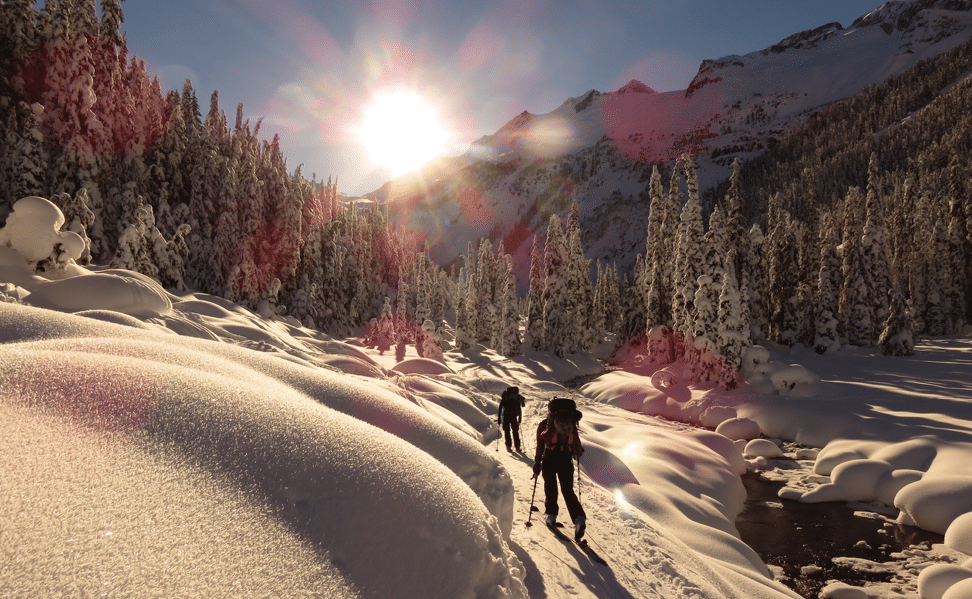Whether skiing, snowshoeing, ice climbing, or snowmobiling, enjoying winter recreational activities mean an increased risk. Days are short, temperatures are cold, weather is unpredictable, and travel can be challenging.  To help keep you safe, our Remote Medical Instructors have compiled a list of their 10 must-haves for winter backcountry recreation.
- First Aid Kit: When in a remote or challenging environment, medical help can be hours or days away if you have a medical emergency. It is important to bring a kit that is appropriate to your skill level. Check out some of our advanced kits here.
- GPS:Â With trails covered in snow, a GPS is extremely useful in route finding. Cell phones are very sensitive to cold temperatures, so if that is your preferred GPS, make sure you have a backup, or that your GPS has enough of a charge or backup batteries. Make sure you tell someone before you leave where you are planning on going and how long you should be out.
- Multiple Layers: Even when you do not plan on stopping much or being out for long, having a base layer (1-2 synthetic wicking layer to keep you dry), middle layer (insulating layer – think expedition micro-fleece or down) and an outer shell (waterproof/windproof, etc.) could mean the difference between life and death if something unexpected happens.
- Small Repair Kit: There’s no worse feeling than a gear malfunction on a cold, wintery day miles from where you started. Make sure you have a multitool, ski straps, duct tape, or whatever you need to fix your gear if it breaks so that you can get back safely.
- Hand Warmers: Hands and feet are usually the first parts of the body susceptible to frostbite. Loss of hand function and dexterity can be detrimental, so bring a few of these with you. For more tips on frostbite and hypothermia prevention, read our infographic here.
-  Shovel: Should you need to build a snow shelter or dig someone out of an avalanche, a snow shovel is priceless.
- Stove/Fire Starter/Road Flare: It can be extra challenging to find dry, accessible tinder to make a fire in winter. Plan for this challenge. The ability to make a fire quickly or fire up a stove for warm water could prevent hypothermia should you unexpectedly spend the night in the wilderness.
- Avalanche Transceivers or Avalanche Beacons: These are a class of active radio beacon transceivers operating at 457 kHz and specialized for the purpose of finding people or equipment buried under snow. Not only should you carry these with you, but make sure you have the necessary knowledge to use this equipment correctly in case of an avalanche.
- Food & Water:Â It’s a great idea to bring extra food and water with you. Eating snow can help speed the onset of hypothermia. Try to pack lightweight, high-energy foods like jerky or energy bars.
- Medical Training: Of course, we’re biased about the benefits of remote and wilderness medical training, but the information and experience from these courses could literally save your life or others that you care about. Know before you go.
For more information about experience-based remote and wilderness medical training click below. Got additional must-have items for winter backcountry recreation? Post it to the comments.



